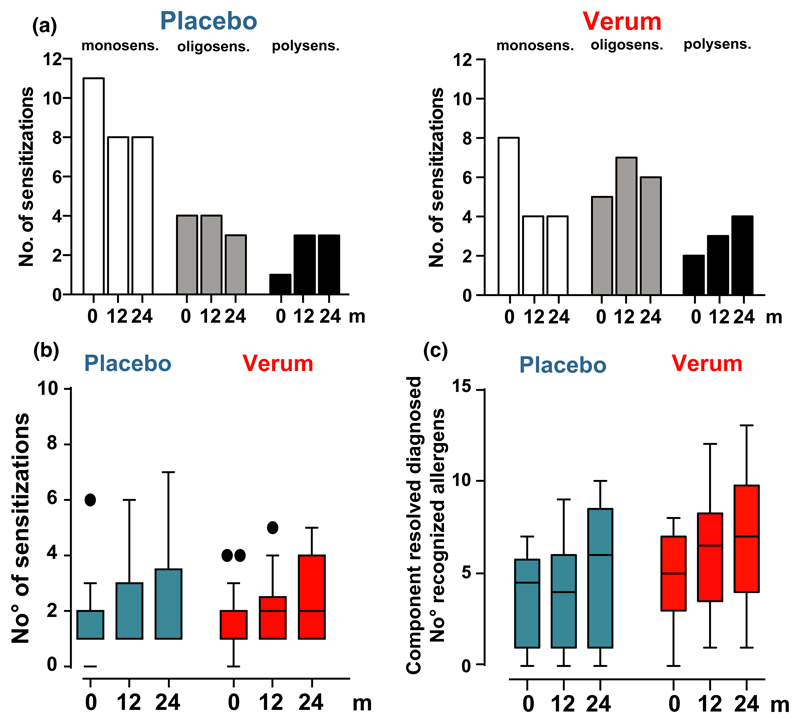Figure 2.
No evidence for an enhanced or reduced IgE sensitization rate in patients treated with preventive sublingual immunotherapy (SLIT). (a) The number of sensitizations to a panel of allergens (Dermatophagoides pteronyssinus, 6-grass–pollen mix, birch pollen, cladosporium herbarum, alternaria alternata, peanut, cat- and dog dander, hen’s egg, and cow’s milk) was assessed via ImmunoCAP. Each patient was assigned as monosensitized (one sensitization), oligosensitized (2–3 sensitizations), and polysensitized (>4 sensitizations). Changes over treatment period are shown. (b) Changes of IgE sensitizations to the 10 allergen sources are shown over treatment period. (c) Microarray analysis of IgE sensitization was used to assess specific IgE antibodies to 58 components of 10 allergen sources (Dermatophagoides pteronyssinus, 6-grass–pollen mix, birch pollen, cladosporium herbarum, alternaria alternata, peanut, cat- and dog dander, hen’s egg, and cow’s milk). Each dot represents one patient’s serum recognizing an individual number of allergen components of the 10 allergen sources. p < 0.05; Wilcoxon-signed rank test.

